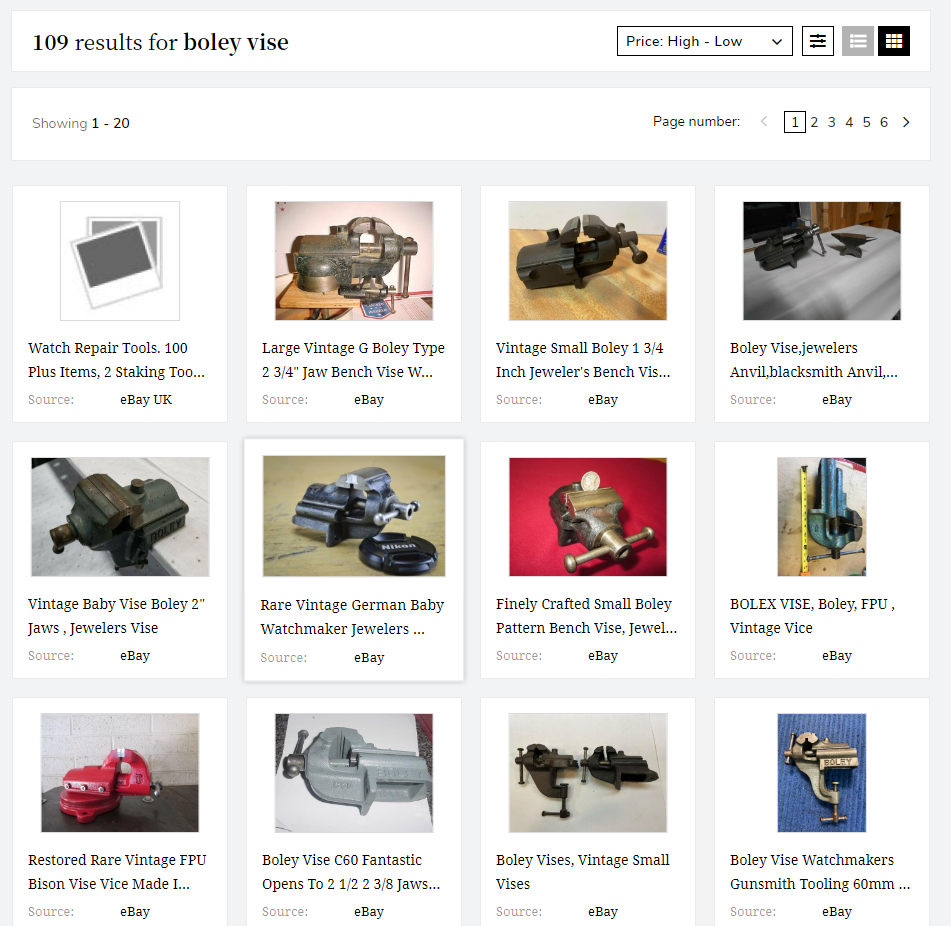Determining Value of Your Vintage Vise.
I have spent years buying, selling and collecting bench vises and pricing is a difficult subject to cover. There are many variables including where you are selling (Marketplace), where you are located (if selling local), the condition of the vise, utility value, replacement cost (if still made) and collectibility. Comparing past sales on eBay is a huge help as well, I recommend and use WorthPoint to get historical sales data. While not an exact science, I will detail my process for valuing a bench vise. Let’s first take a look at the many factors…
Where are you planning to sell?
Where you list your vise for sale will make a huge difference. Local marketplaces like Facebook Marketplace, Craigslist or others will generally bring less money than a nationwide online auction site like eBay. You will get top dollar on eBay, but you will also have to deal with listing fees, packaging and shipping your vise. How much more will you get on eBay? It really depends on the next factor, your location. If you are in the “Rust Belt” of the country I typically see 30% – 40% more when I sell a vise on eBay after shipping is removed from the equation. If you are in any other part of the country, I would lower that estimate to 10% – 20% over selling local.
Where are you located?
Just like real estate, it’s “Location, Location, Location!”. I live in Pennsylvania and am tripping over vintage vises, but someone in New Mexico does not have that good fortune. Most vises we mass produced in the Rust Belt, where the majority of our nations manufacturing occurred. Ohio, Pennsylvania, New York, Connecticut and Massachusetts. I have a harder time selling a vintage vise in Pennsylvania that someone in New Mexico, California or even southern states like Georgia or Florida.
Let’s face it, you would rather list your vise locally, take cash and meet face-to-face to deliver the vise. Shipping a vise to me is nerve-racking as it’s a heavy chuck of cast iron which when thrown around by a delivery driver can suffer much damage if not properly packed. If you are outside of the Rust Belt, expect to get slightly more money on a local sale.
The Condition Of Your Vise.
Here is a tough one, as one person’s evaluation of condition is different than anothers. When it comes to bench vises, there are several conditions that can help or hurt the value…
- The Good:
- Original Paint
- Original labels or tags
- Original box
- The Bad:
- Heavy scratches, grinder marks or hacksaw scars
- Chipped jaws or damaged serrations
- Bent handle
- Casting imperfections
- Owner paint job where they paint the entire vise an obnoxious color, even the slide and jaws
- The Ugly:
- Cracks anywhere on the vise
- Welded on jaws or not original jaws
- Stripped screws
- Welded or brazed repair
Utility Value of your vise.
When trying to sell a common, non-collectible vise the price typically comes down to utility of the vise and replacement value. A perfect example is a regular machinist vise versus a combination vise with pipe jaws. The combination vise, all other factors being equal should bring more money. Extra bonus points for swivel base, swivel jaw and a double swivel vise (body rotates)
Replacement Cost.
Many vises are still available today new e.g. Wilton, Yost and Ridgid. When looking to sell an older version of a current brand, you have inflation on your side. Many of the Wilton bullet vises sell for $300 – $1000 depending on jaw size. Given the better casting quality on the older vises (my opinion) you can typically get 40-60% of new cost depending on condition.
Collectibility…
Here is where things get tough. The market is finicky and your best bet is using comparable sales figures from eBay. Since eBay does not give you history past 30 days, your best bet is WorthPoint. They have data from way way back, and is the only tool I recommend for researching collectible pricing. Besides vises, you can use the tool like I do for pricing other treasures that you find in the wild! Nothing beats picking up a vise, and finding a lathe, machinist tools or other valuable antiques you can flip to fund your vise addiction!

Tip: Pay attention to sale dates, the vise market really started heating up in 2018 and later. Prices before 2018 will be lower than more recent sales.
Summary
It’s not an exact science, and the above equation is simplified and way more involved than that. You best bet is to get comparable sales data to get a feel for the market and use your judgment on the other variables. It can’t hurt to start high on your asking price and take offers.
